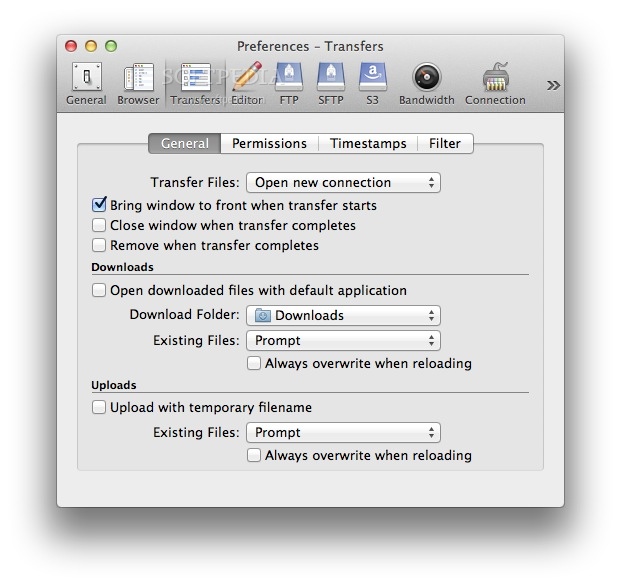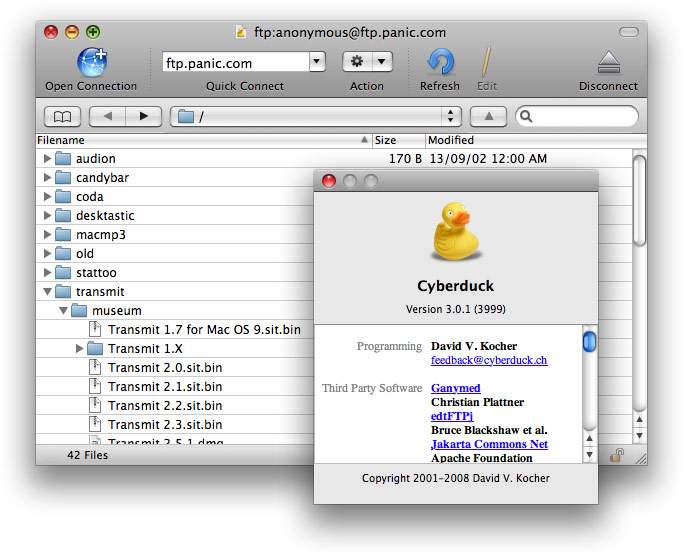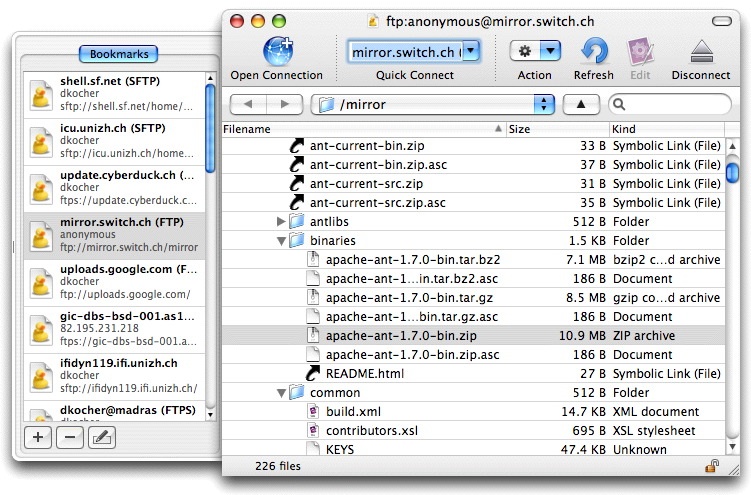
#Cyberduck mac 10.3.9 archive#
In addition to the options I outlined in A modicum of synchronisation, in recent times I have often resorted to browsing my Dropbox archive using the web interface.
#Cyberduck mac 10.3.9 mac os x#
I haven’t tried this solution because I also have three Macs running Mac OS X 10.4 Tiger, and I’d really like to sync as many machines as possible.
#Cyberduck mac 10.3.9 how to#
In the comments to that article, I was pointed to this thread at MacRumors, which explains how to make Dropbox work again if you’re using a PowerPC Mac with Mac OS X 10.5 Leopard. I started working on documents on the PowerBook G4 to finish them later at home on the MacBook Pro, and vice versa. I kept everything in sync without effort. As I mentioned in A modicum of synchronisation, “When Dropbox worked, my workflow was excellent. It was so great when Dropbox worked because I generally use my main Intel Mac at home, and tend to bring with me my PowerBook G4s when out and about.


It could use some more practical features but the fact that it’s available in multiple languages and can access different cloud servers are still positive points you can’t ignore.Ever since Dropbox dropped support for PowerPC Macs running Mac OS X 10.4 and 10.5, I’ve been trying to find a viable alternative to sync selected files and folders between my main Intel Mac, my iOS devices, and my various PowerPC machines. While it’s not as powerful as other FTP clients, its simple UI design can be quickly learned by anybody. Overall, Cyberduck offers flexible file-sharing and has a wide coverage for cloud storage options. Another drawback is that you can’t share files directly from this software-it can only connect you to servers and the cloud. You can at least resume if the process gets interrupted. For one, it’s advised to have only one active connection at a time, as file transfer can become unreliable. However, despite this program’s versatility, it still has some gaps that other FTP clients can provide. Sharing files is also much more convenient, as you only need to copy or open the corresponding URLs of a selected file in your web browser. With these, you can store passwords, automatically discover online services you can connect to, and more. Much of these functions are available for use due to the software’s integration with native platform features such as Finder from Mac and Notifications in the system tray for Windows. Browsing can also quickly be done with caching enabled and Quick Look displaying previews. To remember a file or folder, the program allows you to bookmark it and easily organize your collection using the search function or history list. It also allows external text editors to open files if you need to change their content on the spot. Make things simpleĬyberduck’s user interface promotes ease of use with its drag-and-drop function for quick file transfers.

It can be applied to the Mountain Duck feature, as well, which lets you mount your server and cloud storage as a local disk.

Both the directory names and its contents get the encryption treatment even if you do not have a Cyberduck account . This tool enables the client-side of your connection to be securely encrypted. If you’re still worried about your data, however, you can use the program’s Cryptomator feature. Its SFTP and WebDAV support ensure security for your connections when accessing these programs. This enables wide enterprise file-sharing for better productivity-whether it’s for a small business, a large corporate office, or school projects. Cyberduck supports various third-party cloud storage-hosting service providers such as Amazon S3, OpenStack Swift, Backblaze B2, Microsoft Azure, OneDrive, Google Drive, DRACOON, and Dropbox.


 0 kommentar(er)
0 kommentar(er)
